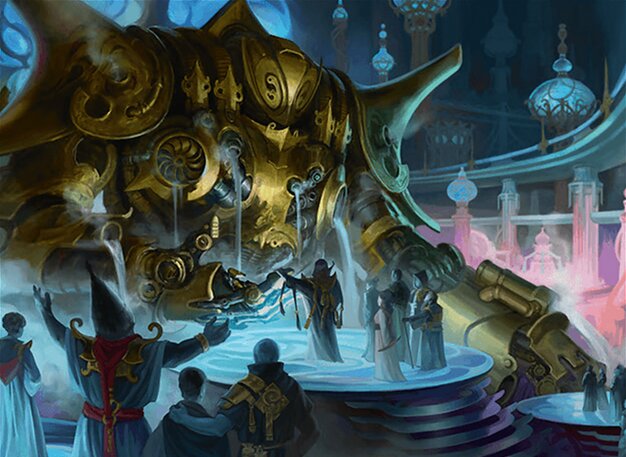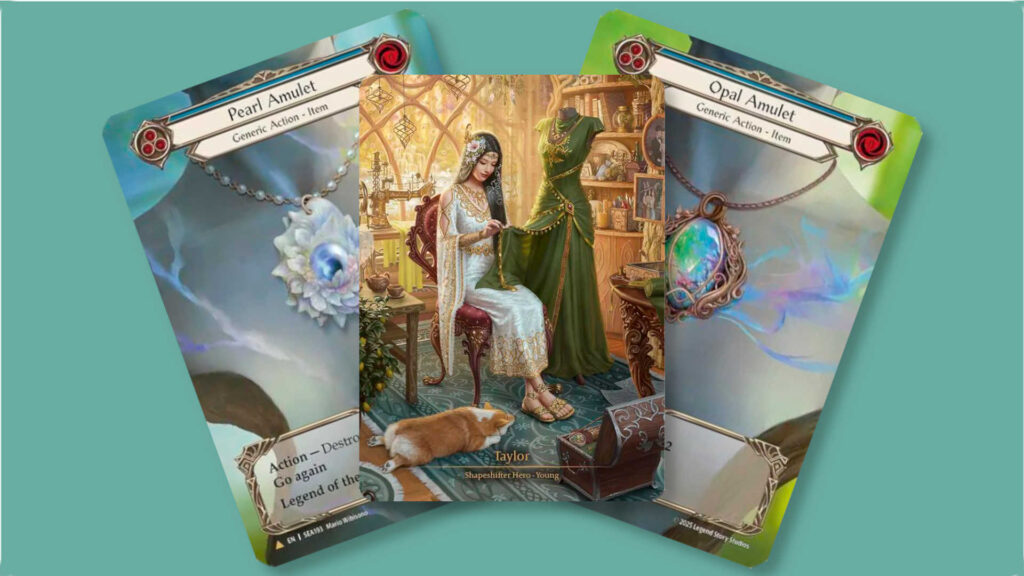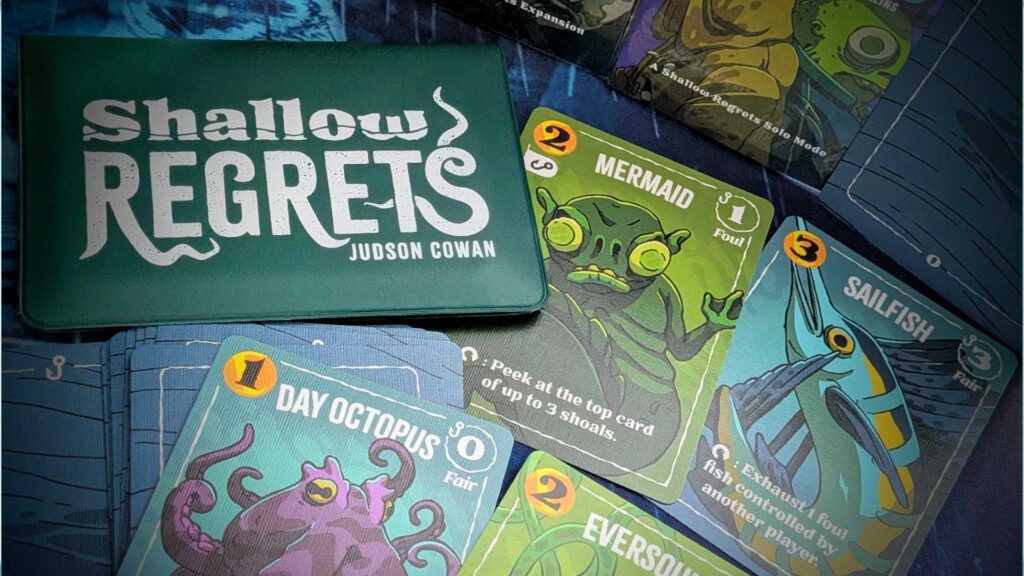Images courtesy of Wizards of the Coast
We’ve crossed the finish line for Aetherdrift preview season, leaving us with over 250 new cards in Standard! Whether you’re looking to upgrade your current deck or brew something entirely new, that’s a lot of cards to consider. Luckily for you, I’m terminally online and have been watching previews very closely for the last two weeks. So today we’re looking at my picks for the best cards in Aetherdrift for your Standard decks!
Table of Contents
Toggle#10 – Marauding Mako
The Pirates of this set mechanically revolve around discarding your own cards for value, and one of the headliners of that strategy is Marauding Mako. It’s a one-mana threat that can grow fast and even has cycling for the late game. I’m not fully sold on this deck archetype yet, as it might just be inferior to Heartfire Hero decks, but I’m still excited to give it a shot. Plus, just look at that smile!
#9 – Perilous Snare
Perilous Snare is being slept on a bit. It’s not the most efficient removal spell in the format, but it’s got some real upsides. I like that it hits any nonland permanent, and if you can get to max speed it threatens to end the game on its own. I don’t know how reliably decks that play this will be able to enable that, but we’ve seen cards that spit out +1/+1 counters thrive before, so it’s worth looking into.
There’s also a chance that this finds a home in white/blue Simulacrum Synthesizer decks. These decks have gotten a few new toys in Aetherdrift, though I’m not sure if they’re enough to propel the deck to tier one.
#8 – The Speed Demon
Black-based midrange decks have a ton of options already for five-drops, but The Speed Demon has some real merit. The body is obviously great for ending games, but it crucially gets you at least one card the turn you play it if it survives. If you survive your opponent’s next turn, it’s likely going to draw enough cards to ensure you can win the game. It also plays well with Unholy Annex // Ritual Chamber and Sheoldred, the Apocalypse (as if either of those cards needed help being fantastic).
#7 – Coalstoke Gearhulk
People will at least test all five of the new Gearhulks in Standard. They’re big, flashy, and generate immediate value. Coalstoke Gearhulk is one of the most powerful of the cycle, being extremely difficult to profitably block and bringing back a creature card from either graveyard for one more attack! It gets even better if it brings back something else with a triggered ability on entering the battlefield or attacking, like Preacher of the Schism!
While I’m very excited to try this card out, I have some reservations. Most current Rakdos Midrange builds aren’t super heavy on great targets to bring back. Additionally, five mana is kind of pricy, and Sunfall is still around to ruin our fun. If this didn’t have the restriction of only reanimating creatures with mana value four or less I’d be way more into it, but it’s probably for the best that I’m not allowed to get Trumpeting Carnosaur back.
Despite all of that, there’s no denying this Construct packs a punch!
#6 – Momentum Breaker
Esper Pixie and Dimir Self-Bounce are two popular decks that play permanent-based removal like Nowhere to Run over and over by bouncing it back to hand. They generally play one copy of Tithing Blade, and the new card Momentum Breaker is better in basically every way. I’d expect these decks to at least play one copy of this card, and potentially more if it performs well and the metagame conditions are favorable.
While we’re on the subject, I want to quickly shout out Grim Bauble. This removal spell can also be bounced back to your hand to reuse, and it can come down on turn one. This is most relevant against Heartfire Hero decks on the draw, and in my experience the Self-Bounce decks already fare pretty well against them, but I wouldn’t be surprised if the Bauble also saw some play.
#5 – Bloodghast
This reprint really came out of left field. Bloodghast has seen success in some of the strongest decks of various eternal formats, so we already know it’s a powerful card. Context is everything though, and there’s a few things going against Bloodghast this time around. Exile effects like Anoint with Affliction and Sunfall are prominent, as is sideboard graveyard hate to keep various reanimator strategies in check. Midrange decks also tend to have creatures like Preacher of the Schism and Sentinel of the Nameless City that come down relatively early and block Bloodghast all day.
All that said, we do have some good ways to get this into the graveyard in today’s Standard. This could slot into a delirium deck or a Dimir variant of Abhorrent Oculus, as both decks can mill themselves consistently. It’s also hard to complain about a 2/1 haste creature that comes in for free, so eating a removal spell doesn’t feel too bad. I’m not sure exactly where this ends up just yet, but it definitely has potential.
#4 – Nesting Bot
Nesting Bot is an unassuming card. We’ve seen similar cards countless times before, with Infestation Sage and Nezumi Linkbreaker being the most recent examples. Nesting Bot, aside from starting your engines on turn one, has a major advantage over its brethren: both it and the token it makes on death are artifacts. This makes it a perfect fit in Boros Convoke.
Convoke decks in Standard rely on early artifacts so they can flood the board with tokens from Gleeful Demolition. When Standard rotated last year the deck lost Voldaren Epicure, leaving the original Boros version missing one of its one-drop enablers and forcing many players to splash blue for Spyglass Siren. Nesting Bot gives the deck another enabler that doesn’t require a splash, which should strengthen the deck’s mana base and consistency considerably. It can even let you cast two Gleeful Demolition on turn two, leaving you with a whopping six creatures on the board!
There’s a real argument to be made for staying on the Jeskai variant of this deck (it has access to counterspells and is a little less susceptible to removal since your opponent is unlikely to be able to remove the Map token from Spyglass Siren in response to Gleeful Demolition) but I think many players will make the switch back to Boros.
Nesting Bot may also find homes in decks that care about getting their engines started as early as possible, or artifact-based aggro decks. I expect to see a lot of this Robot, and so should you!
#3 – Spell Pierce
Spell Pierce is a reprint with quite a track record. It’s previous tenures in the Standard formats of Zendikar, Ixalan, and Kamigawa: Neon Dynasty all saw it succeed in a variety of blue maindecks and sideboards. This will instantly find homes in today’s blue decks, including current top dog of the format Dimir Midrange. I don’t think there’s much else to say about it, it’s just a good card.
#2 – The Verge Lands
Rare land cycles are usually pretty good. The last set of Verges from Duskmourn was pretty good. Surprising nobody, this new cycle of Verges is also pretty good.
In all seriousness, while I am lumping these all together into one spot on the list, they’re going to really improve some decks and potentially help some new ones thrive. Boros Convoke, Temur Otters, and Golgari Midrange are all clear winners here. I’m personally a little sad that Sunbillow Verge is kind of awkward in Boros Prowess (where you really want red mana on turn one), but it might still be an improvement over Thran Portal.
Just keep in mind which color these lands generate on turn one when deciding to put these in a deck. Otherwise, it’s pretty simple figuring out where these belong.
#1 – Brightglass Gearhulk
Brightglass Gearhulk is my pick for the strongest of the new Gearhulk cycle, and I don’t think that’s controversial. The 4/4 first strike trample body is good, and you’re getting two cards as soon as it hits the battlefield! Even with Standard’s limited card pool, there are so many options for what to tutor up. Creatures like Goldvein Hydra and Pawpatch Recruit scale in power later in the game. Utility cards like Dusk Rose Reliquary or Shardmage’s Rescue can come in handy in lots of situations, and even sideboard cards like Ghost Vacuum or Authority of the Consuls can be grabbed with this. It’s hard to overstate this card’s flexibility and power.
This is the card I’m most excited to brew around. We’ve seen a few Selesnya decks like Rabbits and Collector’s Cage builds see success in Standard, but this has the potential to make the color combination really shine.
Closing Thoughts on Aetherdrift in Standard
I’m really curious to see how heavily Aetherdrift actually affects the Standard metagame. Nothing strikes me as completely overpowered, which is generally a good sign. Overall the set might end up making smaller waves than the last few, but there’s definitely plenty to try out. As always, thank you for reading, and join me next time when we look at our first actual deck for the format!
Want to read up on some of the previous season’s successful Standard decks? Check out my articles on Golgari Midrange, Mono-Red Aggro, and Azorius Oculus!




